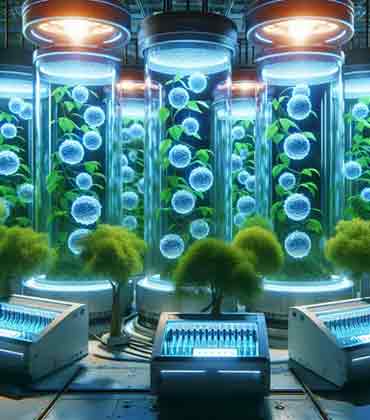THANK YOU FOR SUBSCRIBING
By Nicole Feneli, VP of Wellness & Sustainability, FLIK Hospitality Group
Growing Goods: Inside the Urban Food Movement
By Arun Ahuja, Senior Vice President & General Manager, Healthcare & Corporate at Transact + CBORD
The Path of Least Resistance: Connecting Hospital Food...
By David Hermann, ANZ Electrical, Instrumentation and Process Automation Manager, Goodman Fielder
Digital Transformation and Industry 4.0 in Manufacturing

Food Tech Innovation in the 21st Century
Alex Borschow, Co-Founder and Managing Director, Semillero Partners

 Alex Borschow, Co-Founder and Managing Director, Semillero Partners
Alex Borschow, Co-Founder and Managing Director, Semillero PartnersThe 20th century saw huge increases in food production with the green revolution driving up yields and technology industrializing the manufacturing of processed foods with greater shelf lives. This made food cheaper and more available, but without a focus on health or nutrition. Consumers of the 21st century are increasingly looking for food that is less processed, with cleaner ingredients, and better for them.
We are now in the midst of the next wave of technological innovation focused on producing foods that are not only more nutritious, but also use less energy, water, land, chemicals, antibiotics, and fertilizers. Three areas of particular interest for us at Semillero Partners are plant-based alternatives,healthier beverages, and cellular meat.
The first wave of plant-based alternatives like Beyond Meat and Impossible Foods created animal-protein alternatives using highly processed ingredients and difficult to pronounce chemicals.
Although they continue to improve their formulations, the health and nutritional profile of these products leaves many consumers wanting for something cleaner. Jack and Annie’s is instead using whole plants like jackfruit to create cleaner and minimally processed meat-alternative innovations that are naturally rich in fiber and minerals. Other companies like Spero Foods have developed a full suite of patents for fermenting and processing sunflower and pumpkin seeds to produce dairy and egg alternatives that melt, stretch, and scramble just like the animal-based incumbents, but use 99% less water, land, and energy to make.Boston-based Clover Food Lab brings tech innovation to the food service industry by building in-house vertically integrated systems to create the flexibility in sourcing and using seasonal and local ingredients. Theirvegetarian menus can change from week to week and more than 85% of their customers are meat-eaters who crave the variety and deliciousness of the offerings – from their stores, to ordering ahead via the app, or receiving subscription boxes at home.
The global juice industry is a $141 billion business that is under fire for the astronomically high amounts of sugars found among its offerings. Adding artificial chemical sweeteners like aspartame and sucralose severely change the flavor profile and still cause unwanted health effects.According to a recent IRI report, 84% of Americans are actively limiting their sugar intake. Companies like Israel-based Better Juice have developed proprietary enzymes that can instead convert the naturally occurring sugars in fruit juices into prebiotic fiber – without adding any chemicals or changing the flavor.
This is a groundbreaking technology leveraging precision biochemical engineering. They have already established partnerships with global players like Citrosuco and several leading U.S. juice manufacturers.
One area that has received a lot of attention and$2 billion investment last year has been cellular meat. This involves the production of chicken, beef, pork, or other animal products, but without the animal. Instead the muscle, fat, and other cells are cultured in bioreactors or fermentation tanks and are biologically identical to the products produced by industrial farming. The important difference lies in that cellular meat requires 95% less water, land, and energy. It also doesn’t require antibiotics or fertilizer use. You get a cleaner product that is healthier for people and the planet. There are companies like Mirai Foods that have a full patent portfolio for the extracellular matrix scaffolds where cells are grown, to the alternative to fetal bovine growth serum that earlier technologies depended on. Over the next decade, the cost of production will continue to scale down dramatically. We’ve already seen the price of a lab-grown burger drop from $325,000 in 2013 to under $10 today. We expect cellular meat to make up 10-20% of supply over the next decade, which is a $125-250 billion market opportunity.
Technology is a driving force for innovation and sustainability in the food industry. By partnering with ambitious and pioneering entrepreneurs and companies, we can make food better for people and the planet.
Read Also














